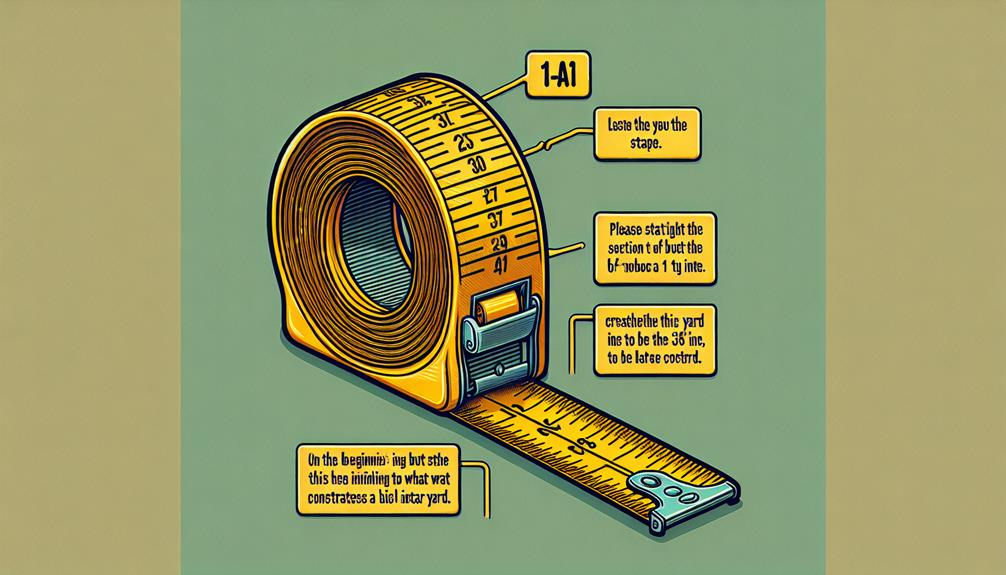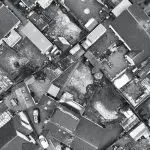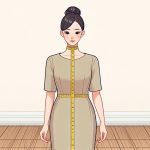Have you ever wondered about the significance of a linear yard in various industries and everyday life?
Well, a linear yard is more than just a unit of measurement; it plays a vital role in determining the length of various materials and fabrics.
From textiles to construction, the concept of a linear yard is fundamental.
But how exactly is it measured, and what distinguishes it from a square yard?
Understanding these distinctions can shed light on its practical applications and advantages.
Stay tuned to uncover the mysteries surrounding the linear yard and its implications in our world.
Table of Contents
Key Takeaways
- A linear yard is 3 feet or 36 inches, essential for fabric cutting accuracy.
- Linear yards are crucial in construction and landscaping for precise measurements.
- Understanding the distinction between linear and square yards is vital for accurate conversions.
- Mastery of linear yard measurements is essential for successful sewing and project planning.
Definition of a Linear Yard
When I measure fabric for a project, I always rely on the clarity of a linear yard, which simplifies my calculations and guarantees I've the right amount needed. A linear yard is a unit of measurement that's equivalent to 3 feet or 36 inches. Understanding the concept of a linear yard is essential for various applications, from tailoring to landscaping.
In the domain of linear yard conversion, it's important to grasp that one linear yard is equal to 0.9144 meters. This conversion factor is handy when working with international patterns or dimensions that use the metric system. By knowing how to convert linear yards to meters accurately, one can seamlessly navigate between different measurement systems.
In landscaping, the linear yard plays a significant role in determining the quantity of materials needed for projects such as laying down pathways or installing fencing. Calculating the linear yardage required guarantees that there's neither excess wastage nor a shortage of materials, leading to a more efficient and cost-effective outcome. Mastering the concept of the linear yard is fundamental in many fields, making it a valuable unit of measurement to understand thoroughly.
How to Measure a Linear Yard
To accurately measure a linear yard, one simply needs to use a standard measuring tape or ruler. When measuring a linear yard, it's important to make sure yardstick accuracy, as even a small error can result in significant discrepancies. Linear measurement involves quantifying length in a straight line, making it vital to follow precise techniques.
To begin, lay out the measuring tape or ruler in a straight line on the surface you wish to measure. Make sure that the starting point is at the beginning of the item or area you're measuring. Gently pull the tape or slide the ruler along the length, keeping it straight and taut to prevent inaccuracies.
As you reach the end point, note the measurement where it aligns with the edge. This number represents the linear yard's length. Remember, accuracy is key when measuring a linear yard, so take care to avoid any bends or folds in the measuring tool for precise results.
Applications of Linear Yards
Linear yards find diverse applications in various industries, showcasing their versatility and importance in measuring length accurately. When it comes to fabric cutting, understanding linear yards is essential for determining the amount of fabric needed for projects. Seamstresses and tailors rely on precise measurements in linear yards to make sure they have enough material to create garments without excess waste.
In the construction industry, linear yards are indispensable for ordering and using construction materials efficiently. Whether it's calculating the amount of piping needed for plumbing projects or determining the right quantity of flooring materials, contractors and builders heavily depend on accurate linear yard measurements to avoid shortages or overages.
The concept of linear yards also comes into play when planning landscaping projects, such as measuring the length of fencing needed for a property or determining the amount of sod required for a lawn. To summarize, mastering the use of linear yards is essential for professionals across various fields to streamline their processes and achieve the best results.
Differences Between Linear Yard and Square Yard
Let's talk about the differences between a linear yard and a square yard.
When we think about measurement, it's important to understand the distinction between length and area – linear yards are for measuring length, while square yards are for measuring area.
In practical terms, linear yards are often used in sewing and fabric-related tasks, while square yards are more commonly utilized in construction and landscaping for calculating surface area.
Measurement in Length
When comparing a linear yard to a square yard, the key difference lies in how each unit measures length versus area. A linear yard is a unit of measurement used to quantify length, typically for fabrics or linear objects, while a square yard is a unit used to measure area, such as the size of a piece of land or room.
Understanding the distinction between these two units is vital for accurate measurements. By ensuring yardstick accuracy and employing proper measuring techniques, one can effectively utilize linear yards for length measurements.
Additionally, being aware of conversion formulas and unit comparisons between linear and square yards aids in converting between the two types of measurements seamlessly.
Area Vs. Length
Understanding the distinction between a linear yard and a square yard is important when differentiating between measuring length and area. When it comes to area conversion, a square yard is a unit used to measure two-dimensional space, while a linear yard is used for length estimation in one dimension.
- Linear Yard: Primarily used for measuring length, such as for fabrics or ropes.
- Square Yard: Utilized for measuring area, like in landscaping or flooring.
- Conversion: Converting from square yards to linear yards requires considering the width of the material.
- Estimation: Linear yards provide a straightforward measurement, while square yards involve calculating the total area covered.
Usage in Sewing
Moving from the distinction between linear yards and square yards, using these measurements in sewing involves understanding how each unit plays a unique role in fabric estimation and layout. When working on sewing projects, accurate fabric measurements are important for a successful outcome. Here's a comparison of how linear yards and square yards differ in their usage in sewing:
| Linear Yards | Square Yards |
|---|---|
| Used for measuring fabric in a straight line | Measured area |
| Ideal for determining the length of fabric needed | Helpful for estimating total fabric required for a project |
| Commonly used for cutting patterns and trims | Useful for larger sewing projects like quilts |
Understanding the distinctions between linear and square yards is essential for efficient fabric management in various sewing endeavors.
Advantages of Using Linear Yards
Using linear yards can greatly simplify measuring fabric for sewing projects and reduce the risk of errors. When working on sewing projects, the advantages of using linear yards become evident:
- Precision: Linear yards provide a standardized unit of measurement, allowing for accurate cuts and ensuring that the fabric pieces match the pattern requirements precisely.
- Efficiency: Calculating yardage based on linear yards streamlines the process, saving time and reducing the need for complex conversions between different measurement systems.
- Cost-Effective: By using linear yards, you can purchase the exact amount of fabric needed for a project, minimizing waste and potentially saving money in the long run.
- Consistency: Working with linear yards promotes consistency in measurements across different projects, making it easier to replicate successful outcomes.
Common Misconceptions About Linear Yards
Let's clear up some misunderstandings about linear yards.
Many people confuse a linear yard with a square yard, but they measure different things.
Understanding this distinction can help in accurate measurements for various projects.
Linear Yard Definition
When considering a linear yard, it's important to understand the common misconceptions that can arise.
- Linear yard conversion can be tricky; make yardstick accuracy.
- In the textile industry, the demand for linear yard fabric is high.
- Some mistakenly believe a linear yard is the same as a square yard.
- It's vital to distinguish linear yard measurements from square yard measurements to prevent errors in projects.
Understanding the intricacies of linear yards requires attention to detail. Whether it's making accurate conversions or meeting the demands of the textile industry, clarity in measurement is key. By debunking misconceptions and embracing precision, mastery of linear yards becomes achievable.
Measurement Misconceptions
Many people mistakenly believe that a linear yard is equivalent to a square yard, leading to confusion in measurements and project planning.
When measuring fabric, it's important to understand that a linear yard is simply a unit of length, equal to 36 inches or 3 feet. Unlike a square yard, which measures area (a 1-yard by 1-yard square), a linear yard is a straight line of a specific length.
To avoid errors, always remember that when you purchase one linear yard of fabric, you're getting a piece that's 36 inches long. Pay attention to yardstick accuracy in order to ensure precision in your measurements, especially when working on sewing or crafting projects that require specific fabric lengths.
Frequently Asked Questions
Can a Linear Yard Be Used to Measure Area or Volume?
Sure, a linear yard is a unit of length, not area or volume. It's used to measure straight-line distances. Conversions, applications, and differences between linear, square, and cubic yards are important to understand when working with measurements.
Are Linear Yards Commonly Used in Construction Projects?
Linear yards are essential in construction projects for measuring materials like fabric or piping. In art, a linear yard can dictate canvas size, while in landscaping, it helps determine the length of materials needed for borders or paths.
How Does the Measurement of a Linear Yard Differ From a Regular Yard?
When it comes to the measurement of a linear yard, accuracy is key. Unlike a regular yard, a linear yard is specifically used for linear measurements, making it vital for applications like fabric cutting or landscaping projects.
Can Linear Yards Be Used in Sewing or Fabric Measurements?
In sewing projects, linear yards are handy for fabric measurements. They simplify calculating fabric needs for patterns. I find them useful for precise cuts and efficient planning. Linear yards streamline my sewing process.
Are There Any Specific Industries or Professions That Heavily Rely on Linear Yards as a Unit of Measurement?
In the textile industry, fashion design, landscaping, and interior design, linear yards are essential for accurate measurements. Professionals in these fields heavily rely on linear yards for fabric, materials, and space planning.
- Tetron Fabric for Marine Applications: Durability and Use Cases - June 18, 2025
- Tetron Fabric for Outdoor Furniture: Weather Resistance and Care - June 18, 2025
- Tetron Fabric for Wall Coverings: Style and Application Tips - June 18, 2025







